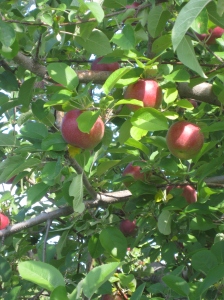Here we are on the first day of April and snow from yesterday is just melting away. I am certain that we all hope that is the last of that stuff until next winter. But as March ends and April has arrived, so have some of the early birds of spring.
Every year the male red- winged blackbirds and the grackles arrive first- sometimes as early as February, like this year. Because of hard snow cover, they turn up at bird feeders until normal food supplies become available as the snow melts. This year there were horned larks again in February in the fields at Horse Barn Hill in Storrs, but snow cover pushed them out, probably to the shoreline. These birds are regulars in March in the fields around Meig’s Point at Hammonasset State Park. They come and go early, so I time my visits accordingly.
Another early bird is the Eastern Phoebe, a flycatcher that I consider the true harbinger of spring. Once you see one, they seem to appear everywhere. They have a sweet “ peep “ call and a raspy song that sounds like it is saying its name. I wonder if the bird was named for its call… These birds nest early and like flat sheltered spots like building eaves and bridge supports. These brownish gray birds have white undersides and have a rather large head that may appear flat on top. They also wag their tails when perched. They are extremely active birds, darting from one small tree to another as they fly-catch. They often return to the exact same nesting site every year, so it can be easy to find out when they arrive.
Another bird making its appearance last week was the yellow- rumped warbler. This colorful bird has its more dapper plumage for the spring breeding season. Named for a splash of yellow on the rump, they also have a yellow and black patch on the
shoulder and a yellow crown. Upperparts are dark gray with black striping on the breast and back. The face sports a black mask and the chin is white. These birds usually travel in groups and can be discovered by observing birds that are foraging on the outer areas of the tree canopy or darting out from the canopy to capture insects on the fly. Listen for their sharp “ pick “ calls, coming from many birds moving through the trees.
In the fall, these birds lose their breeding plumage, but can still be identified by their flycatcing behavior, contact calls, and the yellow splashes on the rump and shoulders.
Palm and pine warblers are also among the earliest warblers to pass through our area on their way to northern breeding grounds. As the name suggest, the pine warblers are most often found where there is an abundance of pines. They can be easier heard than seen, so listen for a musical trill ( similar to a chipping sparrow or junco ) as they forage for insects and seed high up in pines. Palm warblers come in about the time when wild honeysuckle is leafing out and skunk cabbage is about eight to ten inches high. Listen for their weak trill and soft “ pick “ as they forage for food in swamps and bogs as well as in moist woods and areas of woodland ponds. They are dull brown on top with a rusty cap and yellow on the face and throat. Like the phoebe, the palm warbler also wags its tail revealing a splash of yellow under the tail.
I save the best for last- the American Woodcock a peculiar bird that is not soon to be forgotten when seen for the first time. It has a globular head with bill like a long, pointed straw and a plump oblong body. This woodland bird is superbly camouflaged in brown, black, buff and gray tones, and lying on the forest floor, it is virtually invisible. Twice I have almost stepped on one that was sitting on a nest, and only was aware of it as it flew away. Also found in scrubby fields, its diet consists largely of earthworms, which are found by probing the ground with their long, stout bill. Males can be heard in early morning or dusk as they use a distinctive “ peent “ or “ beep “ call to attract females.
They also have an acrobatic courting flight display that can be seen at dusk and dawn in the spring. After calling for a few minutes, the male takes off to a height a 100- 300 feet and then spirals down to the ground. In our area these birds have the nickname “ timberdoodles “. Some nature centers and birding clubs sponsor yearly outings to observe the male flight displays. The wood line on Horse Barn Hill Road in Storrs is one place to see these birds.
So spring is here at last, and the birds are coming in right on time. And the greener it gets, the more birds we will see. Enjoy!
Pamm Cooper



















